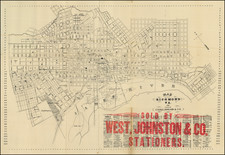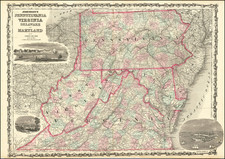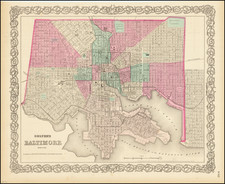Battle of Yorktown -- September 1781 -- Informing The British Public of the Progress of the War
The 1781 Political Magazine map titled "A Map and Chart of those Parts of the Bay of Chesapeak York and James Rivers which are at present the Seat of War" served as a practical tool for the British public to understand the state of the Revolutionary War in September of that year. The map highlights key locations and military standings in the Chesapeake Bay region, on the eve of the British surrender on September 28, 1781.
The Battle of Yorktown, fought in 1781, was the decisive confrontation of the American Revolutionary War that effectively led to the British surrender and the end of the conflict in America's favor, solidifying the future of the new nation. The map illustrates the region around the Chesapeake Bay, specifically highlighting the areas between the York and James Rivers, which was the primary theater of the Battle of Yorktown. This region was crucial due to its strategic significance for both the British and Franco-American forces.
General Cornwallis, leading the British troops, had fortified his position in Yorktown, expecting support from the British navy. However, the French naval blockade depicted in the map, particularly off Cape Henry, played a pivotal role in cutting off any potential naval aid to Cornwallis.
Meanwhile, the combined forces of General George Washington and French General Rochambeau laid siege to Yorktown, effectively trapping Cornwallis. The map shows the major routes, such as the roads from Williamsburg and Hampton to York Fort, which would have been critical for the movement of troops and supplies.
With the British navy unable to breach the French blockade and reinforcements unable to reach Cornwallis by land due to the Franco-American encirclement, the British found themselves in an unsustainable position. This resulted in Cornwallis's eventual surrender, marking a monumental victory for the American revolutionaries.
The geographic span of the map is extends focuses on the mouth of Chesapeake Bay, extending north to the Piankatank River and Naswattix on the Maryland Eastern Shore, and south to the James River. It provides a clear layout of significant locations without overwhelming the viewer with excessive minutiae. Place names, rivers, towns, and other prominent landmarks dot the map.
The map's military annotations present a clear picture of the wartime situation. The positions of "Lord C(ornwallis)'s Post at Glocester" and "Washington & Rochambeau's Armies" help to inform the British public of the troop placements of both sides. The depiction of "The French Blockade off Cape Henry on the Morning of September 5th" is particularly significant, offering a hint at the broader strategic implications of the war and the role of international alliances.
Additionally, the roadways, such as the one from Williamsburg to York Fort and from Hampton to York Fort, provide insight into the possible routes of troop movements and communication lines during that period.
The map provided an informed view allowing popular British readers to understand the strategic significance of the Battle of Yorktown and the movements of the various forces leading to the British defeat.











![Map of the Main Portion of Pittsburg and Allegheny [with verso] Delaware. Maryland.](https://storage.googleapis.com/raremaps/img/small/84993.jpg)
![[ Marqus de Lafayette -- A letter written from prison ] Extrait d'une note ecrite, dans la prison de Neiss en Silesie, Par le General Lafayette](https://storage.googleapis.com/raremaps/img/small/103827.jpg)
![(American Revolution - East Florida - Tropical Medicine - Slavery) [Manuscript document from John Moultrie dated May 16, 1784] Thoughts that may be of use to my people and plantation in the Bahamas and orders that I beg may be obeyed](https://storage.googleapis.com/raremaps/img/small/86627.jpg)
